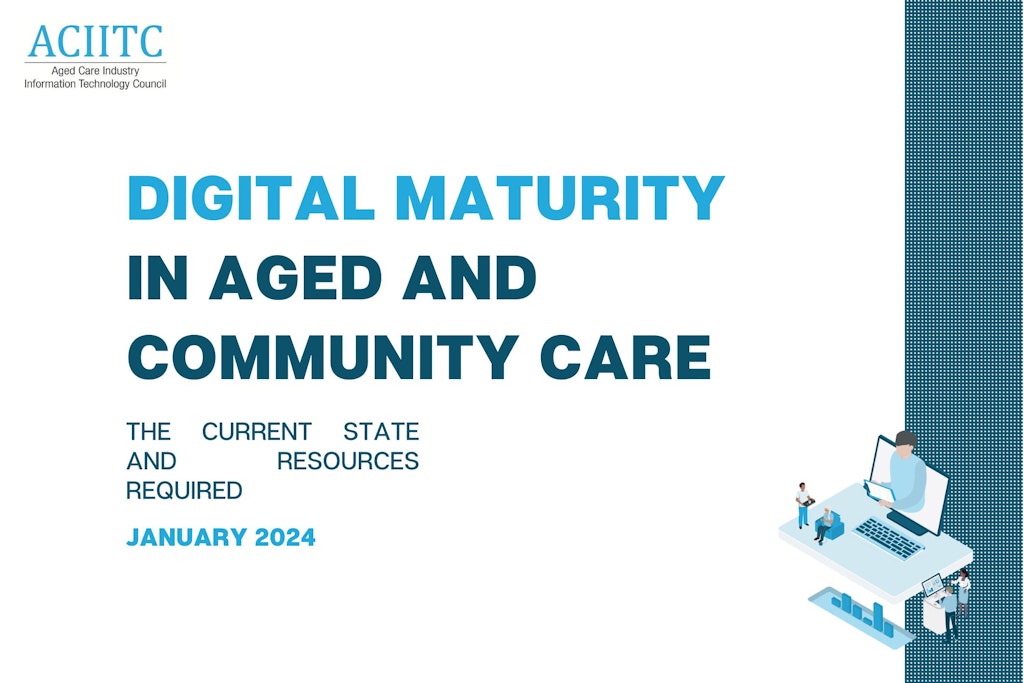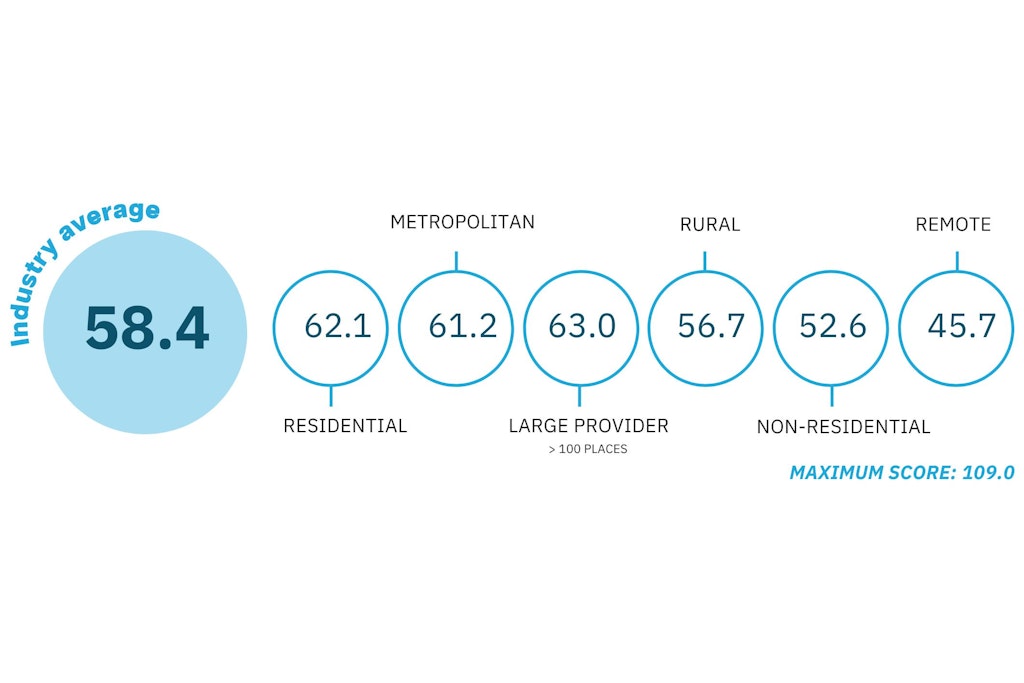Digital maturity benchmarks in aged care highlight growth opportunities
Last updated on 8 February 2024

There are positive signs the aged care sector is succeeding in its digital transformation journey, with the Aged Care Industry Information Technology Council (ACIITC) establishing a new benchmark for digital maturity in the sector.
However, there’s also plenty of room for growth with calls for greater Government support and widespread prioritisation of digital transformation by providers.
Key points
- Digital maturity is defined as an organisation’s ability to adapt so that it can function effectively in an increasingly digital environment, with an average maturity score of 58.4 out of 109 recorded
- Large providers in metropolitan areas tend to be more digitally mature than rural and remote providers who are making significant strides in their digital journey
- Key domains such as cybersecurity, effective communication and digital leadership are among the strongest areas of performance
- A lack of innovation, system interoperability, low usage of predictive analytics and standardised data are some of the obstacles holding providers back
ACIITC’s Digital Maturity In Aged and Community Care Report builds on the first benchmark of digital maturity in aged care from 2020, establishing advanced framework and digital maturity scores that can help providers understand where improvements lie.
Anne Livingstone, the Executive Lead of ACIITC, told hello leaders the Report highlights the current state of positioning for the digital transformation journey. She said while there may be a perception an average maturity score of 58.4 is low, it showcases the need for additional investment in digital transformation.
“The Report is not a call out to say our sector is digitally immature. It’s a call out to say we need high levels of investment through a more strategic lens and we need a plan to assist in funding to achieve digital transformation that the sector needs to improve efficiencies, increase productivity, and most importantly, to improve quality,” Ms Livingstone explained.
“Providers have made some significant improvements but we’ve now identified core areas in which we can do better and we can set some short and long-term strategies for. We’re keen to use this as an ongoing measurement and to help the sector emerge over time as a digitally mature industry.”
Large providers leading the way

- Overall, large metropolitan providers recorded the strongest digital maturity scores, reflecting the positive impact of increased resources and capabilities compared to many rural and remote operations
- There was also an interesting difference between residential and non-residential (e.g. home care) providers; residential aged care providers had an average digital maturity score of 62.1 while non-residential providers averaged 52.6
This difference could arguably relate to the vast number of smaller providers in the home and community care space with one home care provider stating how removed they are from the digital world.
“The survey was not relevant to our organisation […] We are a not-for-profit, volunteer organisation with one employee and we work from home offices on personal computers. My take from the survey is that it all looks very complicated and costly and reinforced how ‘removed’ we are from the digital world,” they stated.
Recognisable obstacles are preventing small providers from increasing their digital maturity, such as limited staffing, revenue, resources and time. Ms Livingstone said it’s an important priority for any organisation and increased digital literacy of the workforce is one investment that can transform the sector.
“Any service provider who’s not placing digital transformation as a key issue for its improvement strategy is placing itself in jeopardy. Business transformation underpinned by the right technology should be a high agenda item for boards, management, executives and the frontline,” she said.
Greater innovation required
Digital maturity strengths such as cybersecurity, communications and leadership are common across the sector, however, low levels of self-reported innovation are holding providers back.
Ms Livingstone believes providers are on the horizon of breakthroughs with tools like artificial intelligence and digital connectivity, yet many providers are struggling to adopt this technology without Government commitment and investment.
“The Government is doing a lot of work in the digital space and the evidence is overwhelming that technology and innovation do improve the quality of care. We can connect other systems, family members and communities to an individual [receiving care] if there’s user-friendly technology and it’s implemented appropriately,” Ms Livingstone said.
She hopes this Report will provide relevant information for the Government and providers to increase digital maturity levels. A pair of co-designed digital maturity improvement toolkits will also be released to ensure providers see more detailed benchmarking, access additional guidance for strategic development and identify priority areas for attention.
“We don’t want providers to think they’re in this alone. There are a lot of resource-sharing and resource-development opportunities,” Ms Livingstone added.
ACIITC will showcase innovation and technology approaches, partnerships and collaborations at the Innovation and Technology Across Care (ITAC) National Conference next month.